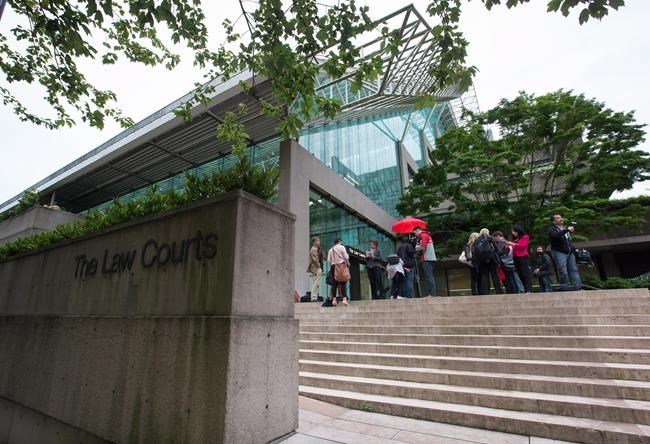VANCOUVER — A forensic pathologist testifying in the trial of a man accused of murdering a 13-year-old girl in Burnaby, B.C., told the British Columbia Supreme Court Tuesday that the victim sustained "blunt force" scalp and head injuries before she died.
"They could have happened immediately before death or up to several hours before death," Dr. Jason Morin said.
The body of the girl, who cannot be identified under the terms of a publication ban, was found in Burnaby's Central Park in July 2017, just hours after her mother had reported her missing.
Ibrahim Ali last month pleaded not guilty to first-degree murder in the trial.
Morin, who conducted the autopsy, said the girl died after being strangled, which caused the bursting of blood vessels from under her chin to the top of her face, and in her eyes.
He previously told the court that the four-hour autopsy and subsequent neuropathology report showed there had been a lack of blood supply to the teen's brain.
Morin said Tuesday that studies have shown it usually takes about 10-20 seconds of compression for a person to fall unconscious, but it would take between two and five minutes without oxygen before death occurs.
He said blood vessels such as those in the girl's face and eyes most often burst when pressure to the neck resulted in the collapsing of jugular veins, but there was not enough pressure to collapse the carotid arteries.
"That results in blood still being able to be pumped from the heart, into the brain and into the tissues of the face and the eyes, but because you've collapsed those jugular veins," blood can't be pumped back to the heart.
He said that increases pressure to the blood vessels, causing them to burst.
It takes about 4.4 pounds of external pressure to collapse a jugular vein, he said. That, he said, is "not something that can be done accidentally. It needs to be relatively consistent, strong, external compression."
Content warning: material that some may find disturbing follows.
Morin told the jury Monday that he identified a number of other injuries to the girl's body, including bruising, scraping and tearing on the back of her head, as well as to her face, arms and legs.
There were no visible injuries to her torso, he later said.
He also testified that during the autopsy he identified lacerations inside her vagina, tears inside the anus and a bruise on the wall of the rectum. He then took swabs of each of these areas, which he examined under a microscope.
"I identified sperm," Morin told the court Monday,
On Tuesday, he further described a "moderate to large" tear at the vaginal opening that he said was likely a "penetrative injury causing the pulling and eventual tearing."
"It was an acute injury, so there is no evidence of healing so the time frame would have been immediately before death up to several hours before death," he said.
Crown attorney Isobel Keeley said in an opening statement that the court would hear evidence showing the murder was random, but DNA results would prove Ali sexually assaulted her.
She said the evidence would show the girl was passing through a neighbourhood park when she was dragged off a pathway into the forest by Ali, sexually assaulted and strangled.
Defence attorneys for Ali have not yet cross-examined Morin.
The trial is expected to take about two months and will hear testimony from about 50 people, including civilians, police and expert witnesses, Keeley told the jury in opening statements on April 28.
This report by The Canadian Press was first published May 16, 2023.
Brieanna Charlebois, The Canadian Press




